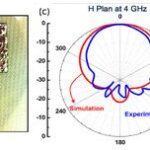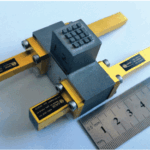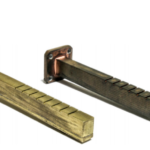

As 3D printing continues to offer a host of benefits in the manufacturing of components like antennas, researchers Shaker Alkaraki and Yue Gao explore new applications, outlining their findings in the recently published ‘mm-Wave Low Cost MIMO Antennas with Beam Switching Capabilities Fabricated Using 3D Printing for 5G Communication Systems.’
One of the greatest advantages 3D printing and additive manufacturing processes offer is the potential to save exponentially on the bottom line in manufacturing certain parts—as well as being able to create them on demand and in many cases, much faster than by conventional methods. In this study, the authors investigate 3D printing of prototypes for multiple input multiple output (MIMO) antennas for 5G and millimeter-wave (mm-wave) applications.
With comprehensive standardization in place by 2020, 5G wireless technology for mobile technology is meant to expand in capacity enormously—by several hundred times over in comparison to previous processes, as it will be used over several frequency bands. So far, most countries have agreed with the proposal to use the following millimeter-wave (mm-wave) frequencies:
- 24 GHz to 29.5 GHz
- 37 GHz to 42.5 GHz
- 2 GHz to 48.2 GHz
- 64 to 71 GHz
Along with speed and affordability, 3D printing also allows the researchers to develop complex shapes; in this case, however, the process is more effective when used with new metallization techniques that are significantly lower in cost. In the MIMO system, multiple antennas are to be used, although there are challenges such as signal losses in higher atmospheres and high cost for system components.
“The attenuation of the signal at mm-wave mainly depends on the propagation distance, weather conditions and operating frequency,” stated the authors. “Shadowing is another important source of signal losses.”
The goal is to 3D print high-performance antennas that are steerable and more efficient but without the typically associated high expense.
The MIMO antenna prototypes developed for this study are:

- Compact in design, measuring 2×2 and 4×3
- More affordable
- More efficient
- Offers beam-switching abilities without phased array technology
The antennas are comprised of two main parts:
- Feeding structure – microstrip made up of mini-smp ground plane/pad, vias and transmission line fabricated using RO4003C substrate with a dielectric constant of 3.38.
- Radiating structure – the 3D printed component, made up of a central slot surrounded by a rectangular cavity and two corrugations.
Creating both an asymmetric electric field and asymmetric surface current, one side of the antenna features a metallized wall. These elements steer the antenna beam, dependent on the wall height. The researchers note that ‘further increment within the wall height’ increases gain up to the point of saturation.
While the smaller antenna is made up of four elements providing radiation in the boresight direction, the larger prototype offers six elements just for providing radiation—and then another six for steering.
“The beam of the 4 × 3 MIMO is steered mechanically through introducing a metallic wall with different height on the side of the radiating single element structure. The sidewall creates asymmetric electric field on the surface of the antenna, which reflects the beam of the antenna to the opposite direction.
“The proposed sidewall is able to steer the beam of the MIMO up to 30° in the elevation plane. Finally, the performance of the proposed MIMO antennas are measured and found to operate as predicted by the numerical simulation tool,” concluded the authors.
3D printing is often a catalyst for greater innovation in creating parts like antennas, encouraging new concepts and expansion of traditional applications as researchers bring forth new projects featuring antennas for biomedical monitoring, polymer antennas for SAR systems, nanoantenna arrays, and more.
What do you think of this news? Let us know your thoughts! Join the discussion of this and other 3D printing topics at 3DPrintBoard.com.
[Source / Images: ‘mm-Wave Low Cost MIMO Antennas with Beam Switching Capabilities Fabricated Using 3D Printing for 5G Communication Systems’]
If you're looking to get architectural 3D animation in the USA, our service provides an exceptional way to bring your architectural concepts to life through dynamic, immersive visuals. Through our platform, you can easily request high-quality 3D animations that showcase your designs in motion, offering a detailed view of your project from multiple angles and perspectives. Whether it's for a real estate development, a commercial building, or an urban planning project, our expert team ensures that every detail is captured in a visually compelling animation.
Through our website, you can seamlessly get architectural 3D animation tailored to your project’s specific needs. With our help, you can offer potential clients or investors an engaging experience that goes beyond static images. By integrating CGI animations with real-world settings, lighting, and textures, our team creates a lifelike experience that allows your audience to interact with your project as though it were already built. This service is perfect for presenting complex designs in a clear, visually attractive way that stands out in the competitive architectural market.




